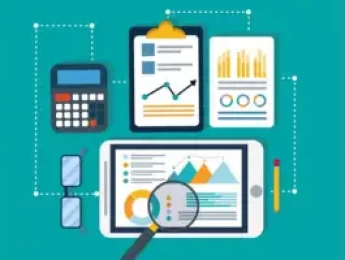Financial decision-making occurs in all businesses to increase profits, make sensible changes, and aim for continuous improvement. Some financial changes may be popular when they are rolled out. For example, a salary increase will likely land well with employees and reflect well on the company from a PR perspective, as it may display the company as a good employer.
However, other financial changes may affect the company, its employees, and its stakeholders differently. While a restructuring may work out well for the company, increasing productivity and saving a little more of the budget, those involved in the restructuring may view the change negatively, or stakeholders and investors may be frightened off at the thought of such a large change.
Communication regarding the financial change is key here. If the change is communicated negatively, that feeling will affect you internally and publicly. Therefore, it’s essential to review your decisions, understand the positive and negative aspects of the change, and be open and honest in your communication regarding the expected changes, timeframes, and reasons for the change.
It’s also essential to keep accurate audit logs based on your change and the evidence and analysis behind the decision. This provides more stability for the company and allows each department to review and reflect on the change to grow and improve. To create positive financial change communications, it’s essential to understand the basic accounting language and access the data and analysis behind the decision to remain in control internally and externally.
Upon completion of this course, participants will be able to:
- Question financial data to gain the most accurate picture of your change plan.
- Create accurate and well-designed roadmaps of potential change.
- Understand the various communication needs within your business.
- Use effective communication styles for each of your audience.
- Assess the potential outcomes of the communication and identify risk areas.
- Mitigate risks and create a contingency plan for negative impacts.
- Understand the differences between profit and cash flow.
- Develop an understanding of how finance can impact each department.
- Recognise the relationships between balance sheets, income, and cash flow statements.
- Create an accurate depiction of cost vs. performance.
This course is designed for anyone responsible for communicating financial change or making large financial decisions that may affect the wider business. It would be most beneficial for:
- Business Owners
- Operations Managers
- Chief Financial Officers
- Project Managers
- Change Managers
- Communications Managers
- Risk Assessors
- Account Managers
- HR Professionals
- IT Professionals
- Administration
- Team Leaders
- Supervisors
This course uses various adult learning methods to aid full comprehension and understanding. Participants will review real case studies from companies that have successfully communicated financial change and conduct group discussions to understand why they feel this communication went well.
They will then participate in a group journey mapping session to explore the potential pain points of financial change communication and brainstorm the reasons for the change to understand why the company made these decisions. Participants will then work in groups to develop their potential financial change scenario and create a roadmap for communication rollout to present to the group.
Day 5 of each course is reserved for a Q&A session, which may occur off-site. For 10-day courses, this also applies to day 10
Section 1: Understanding Your Accounting
- What to consider about your organisation’s accounting methodology.
- The definition and importance of profit.
- Funding your operational changes.
- Cash vs. accrual and who is interested.
- Cash flow forecasting and improvement.
- The function of your finances.
- Income statements and balance sheets.
- What your finances mean to your employees.
- How your finances reflect on you externally.
Section 2: Reviewing Your Financial Statements & Accounting
- Basic income statement components.
- Variable and direct costing and non-cash deductions.
- Depreciation, depletion, and amortisation and the consequences.
- Profit calculations, assets, liabilities, and equity considerations.
- Working capital cycles.
- Operating and investing models.
Section 3: Communication Statements Based on Budgeting
- Mastering budgeting and planning.
- Budgeting components and applications.
- The relationships between predictions and actuals.
- What your budget means for your employees.
- Process management and maintaining service levels.
- Stakeholder buy-in and investment goals.
- Pricing variations and volume effects.
Section 4: The Pros & Cons of Financial Change
- Management accounting against financial management.
- Cost terminology: costs, fixed assets, and incremental opportunities.
- Breakeven and net income scenarios.
- Contingency planning for profit loss and overspending.
- Cost/benefit analysis of financial decisions.
Section 5: Goal Planning, Valuation & Business Performance Metrics
- Your responsibilities as a communicator.
- Considering various communication methods.
- Who needs to know?
- Setting your plan in motion.
- Shareholder value.
- Value-based methodologies.
- Segment reporting and internal and external responsibilities.
- The implications of restructuring.
Upon successful completion of this training course, delegates will be awarded a Holistique Training Certificate of Completion. For those who attend and complete the online training course, a Holistique Training e-Certificate will be provided.
Holistique Training Certificates are accredited by the British Assessment Council (BAC) and The CPD Certification Service (CPD), and are certified under ISO 9001, ISO 21001, and ISO 29993 standards.
CPD credits for this course are granted by our Certificates and will be reflected on the Holistique Training Certificate of Completion. In accordance with the standards of The CPD Certification Service, one CPD credit is awarded per hour of course attendance. A maximum of 50 CPD credits can be claimed for any single course we currently offer.
- Course Code PF1-119
- Course Format Classroom, Online,
- Duration 5 days














